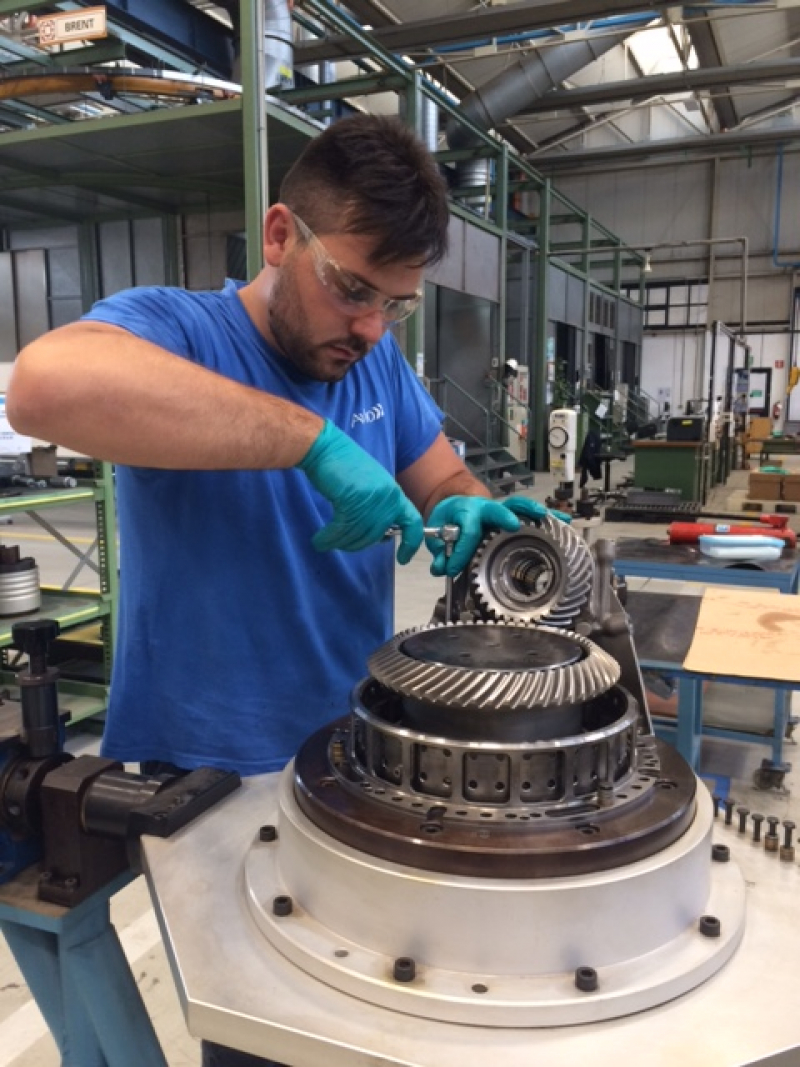Aviation
A magic Spray
Our engineers and technicians have developed a service process with major operational benefits for airlines, all thanks to the thermal spray.
Jun 2017
The GEnx is the "fastest-selling engine" in the history of GE Aviation: the first GEnx-1B to go into service on board a Boeing 787 Dreamliner was delivered to Japan Airlines in spring 2012, and since then more than 1600 orders have contributed to this historic record, which naturally also includes the 2B version for the four-engine Boeing 747-8.
The GEnx engine's distinctive technology and efficiency also marked a milestone in civil aviation, with a 15% improvement in fuel economy, lighter weight due to the use of next generation materials (the TiAl blades of the low pressure turbine, to give just one example) and a 15% cut in CO emissions (compared to the CF6).
Avio Aero was involved in the engine's development from its very first phases, taking charge of the design and manufacturing of the main components for which its leadership is acknowledged industry-wide: the low pressure turbine and accessory drive.
No-one is better placed to offer maintenance and repair services specifically tailored to individual components than who actually conceive the core parts of an aviation engine and contribute to their design from the development stage. Starting from scheduled servicing, essential for every engine throughout its lifetime. And the Avio Aero center of excellence, universally admired for its top-class overhaul and maintenance of mechanical and power drives, is located inside the Pomigliano d'Arco plant itself.
It is here that a new delivery record was recently set for the scheduled overhaul of the gearshafts of the inlet gearbox (IGB) built at the Rivalta di Torino plant. The IGB is the component through which the engine's high pressure compressor shaft passes, driving its gearing up to 412 rounds per second meshed with the other gearing of the transfer gearbox (TGB), to generate energy.
Airlines that fly with the GEnx have therefore benefited from the solutions invented by our interfunctional team of service, quality and production engineers, and last but not least the operating team of the Pomigliano CRO (component repair and overhaul) area. The team has lengthy experience in the repair and maintenance of mechanical components: in fact, the know-how adopted on this occasion comes from years of servicing the legendary GE90 engine. The team decided to treat IGBs in service on GEnx engines with normal levels of gearshaft wear with a thermal spray process called High Velocity Oxygen Fuel (HVOF), also in use at our Brindisi plant. “A win-win-win for everyone involved – says Andrea Pisoni, Program Director for Services – our Customers will save money and will wait less time to receive their gearboxes back, GE will expand its service offer in order to better support its final Customers, and Avio Aero will be able to focus its manufacturing resources on other urgent tasks, to the overall benefit of our Customers.”
The team actually took an extra effort to meet a customer requirement: "the 'quick turn' on the gear HVOF repair allowed the IGB overhaul to be completed on time and to meet the overhaul shop requested date to support the engine rebuild" says Alan Moulvi, GEnx Product Support. "The quick approval of the HVOF process allowed the Pomigliano shop to avoid the need for fitting new gearshafts, and to reinstall the worn ones after restoration to a fully serviceable condition using the thermal spray repair that was completed within about a week, compared to the 30 days that are normally required for this procedure."
The scrap rate (i.e. the ratio between the scrapped or non-reusable parts and those reused) fell by more than 50%, apart from the valuable time saved for the customer. The HVOF repair procedures applies a spray "coating" (of material with mechanical characteristics similar to those of the component's base metal) on the exact point of the gear shaft for repair, and this is then machined to restore the part's dimensional characteristics with micrometric precision.
The thermal spray process is also related to the developments under way in our Additive Repair laboratory at Bari Politecnico. "While cold spray currently aims to recover parts with aluminum or magnesium as their base metal, using an additive process, HVOF is used to repair the steel parts typically found in drive gearshafts, for example. During the coming months this repair process will also be adopted system-wide for other gearshafts with different diameters," explains Fiorentino Tortorella, Senior Engineer - Repair Development at Avio Aero.








